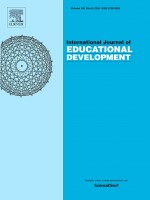Nature 506, 359–363 (20 February 2014) doi:10.1038/nature12874 Received 07 March 2013 Accepted 08 November 2013 Published online 22 December 2013
View Journal Article / Working PaperInteractions between species can promote evolutionary divergence of ecological traits and social signals, a process widely assumed to generate species differences in adaptive radiation. However, an alternative view is that lineages typically interact when relatively old, by which time selection for divergence is weak, and potentially exceeded by convergent selection acting on traits mediating interspecific competition. Few studies have tested these contrasting predictions across large radiations, or by controlling for evolutionary time. Thus the role of species interactions in driving broad-scale patterns of trait divergence is unclear10. Here we use phylogenetic estimates of divergence times to show that increased trait differences among coexisting lineages of ovenbirds (Furnariidae) are explained by their greater evolutionary age in relation to non-interacting lineages, and that—when these temporal biases are accounted for—the only significant effect of coexistence is convergence in a social signal (song). Our results conflict with the conventional view that coexistence promotes trait divergence among co-occurring organisms at macroevolutionary scales, and instead provide evidence that species interactions can drive phenotypic convergence across entire radiations, a pattern generally concealed by biases in age.




